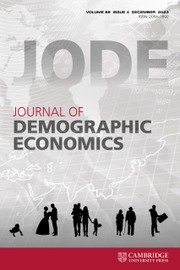No CrossRef data available.
Article contents
A poisoned gift? The hireability signals of an income-support program for the senior unemployed
Published online by Cambridge University Press: 18 September 2024
Abstract
Many Organization for Economic Co-operation and Development countries invest heavily in labor-market programs to prolong careers. Although active labor-market programs have frequently been evaluated, less is known about passive programs supporting unemployed seniors financially. We focus on the latter by investigating the hiring opportunities of candidates who partake in a regime that ensures dismissed seniors a company supplement alongside regular unemployment benefits. Therefore, we conduct a scenario experiment in which genuine recruiters evaluate fictitious candidates who have spent varying durations unemployed in regimes with and without the company supplement. Because recruiters evaluate candidates' hireability and productivity perceptions, we can identify underlying mechanisms. Overall, we find no evidence of employer-side stigma hindering the re-employment of seniors unemployed in the program. Conversely, longer-term unemployed even benefit from this regime because it mitigates regular stigmatization of long-term unemployment, especially for men. Specifically, recruiters judge them more mildly – particularly regarding flexibility – when they receive the supplement and still apply.
- Type
- Research Paper
- Information
- Journal of Demographic Economics , Volume 90 , Special Issue 4: ESPE , December 2024 , pp. 553 - 588
- Copyright
- Copyright © The Author(s), 2024. Published by Cambridge University Press in association with Université catholique de Louvain


